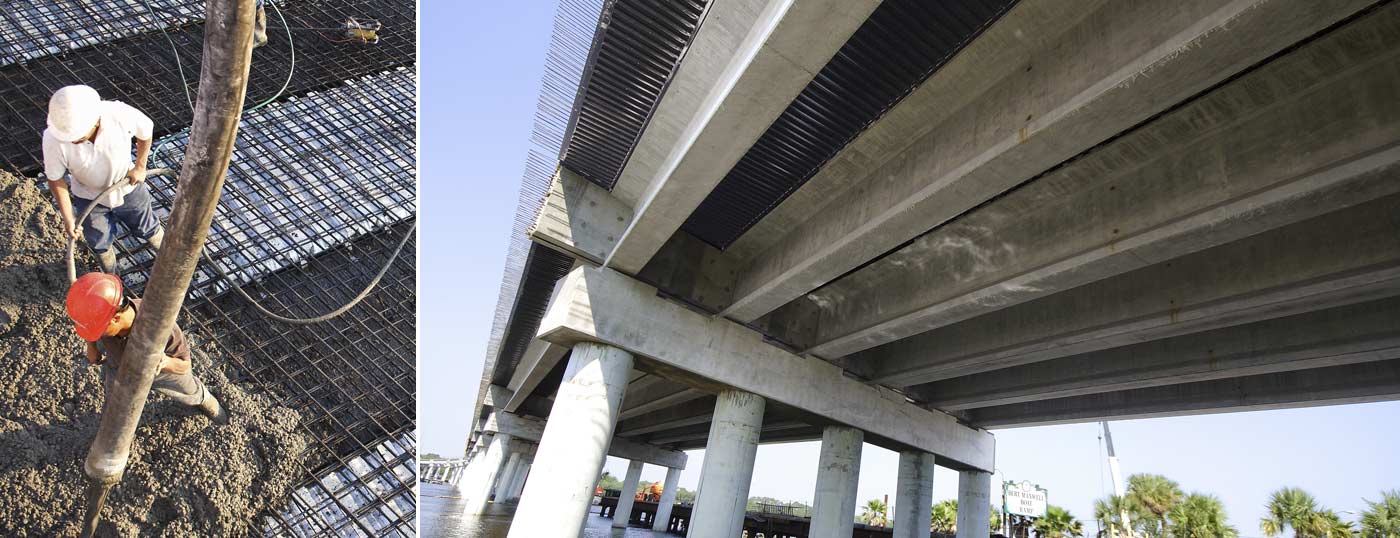
Our nation’s bridges are crumbling—literally.
In January 2021, a baseball-sized piece of concrete broke off an Interstate 75 overpass in Michigan and smashed into a car’s windshield.
In February 2021, concrete fell off a Michigan overpass, crashed through a car’s windshield and struck the driver in the head.
In March 2021, a 4-foot-by-4-foot section of Interstate 77 over Highway 901 in South Carolina fell away, leaving a gaping hole.
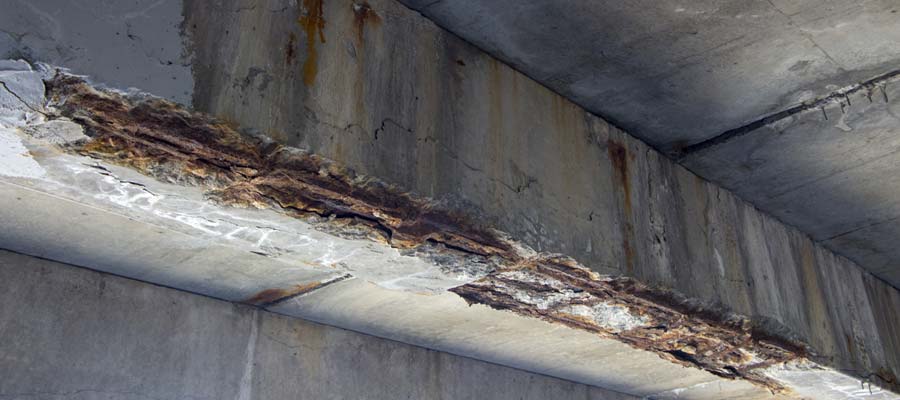
These are just cases that made headlines. At the same time, politicos in Washington, D.C., started negotiating what eventually became a $1.2 trillion infrastructure plan. The first item in the plan includes repairing more than 10,000 bridges across the country.
New Millennium Building Systems supplies two steel stay-in-place bridge deck forming systems designed for bridge repairs and new bridge construction. Bridge-Dek® and Rhino-Dek® are well-suited for the infrastructure plan’s projects. Both install quickly, offer safety benefits and provide long-lasting service life.
There are more than 617,000 bridges across the U.S., with 42 percent of them at least 50 years old and 46,154 of them considered structurally deficient, the American Society of Civil Engineers (ASCE) explains in its “2021 Infrastructure Report Card.” At the current rate of investment, it will take until 2071 to make all necessary repairs. Clearly, speed is a primary need in order to tackle this nationwide problem.
This is where stay-in-place bridge deck forming systems prove their worth. They help shorten project timelines several ways.
First and foremost, stay-in-place forms eliminate the plywood forms often used in bridge construction. Building wood forms to hold poured concrete and then removing them requires time-consuming—and costly—manual labor.
Gerald Arvay and Sev Mullen, district sales managers at New Millennium, estimate total erection time of steel stay-in-place bridge deck forming systems is 50 percent quicker than that of wood forms requiring assembling, installation and removal.
“Crews don’t have to get underneath the bridge to construct removable deck forms,” Mullen says. “Then once they put the steel deck down, they’re not having to go back underneath and take the forms out.”
After installation of stay-in-place forms, work can immediately resume as the steel deck provides a reliable working platform for laborers.
Steel forms can be integrated with steel or concrete girders, offering flexibility for the thousands of bridge repairs highlighted in the infrastructure plan.
“Our bridge deck system can be installed on repair projects to fit the design of the repair,” Mullen says. “Whether using existing beams or tying into existing slabs, we can implement our system to fit. This saves the contractor time and money so all areas of the concrete slab can be formed with metal decking.”
Since steel stay-in-place forms are customized for every project, installation goes smoothly. There should be no surprises or complications once the forms are on site, especially if structural drawings are thorough and specific. Detailed drawings are one of the most important contributions to project success. Making sure things are done right the first time can increase job-site safety, speed erection and help contain project costs.
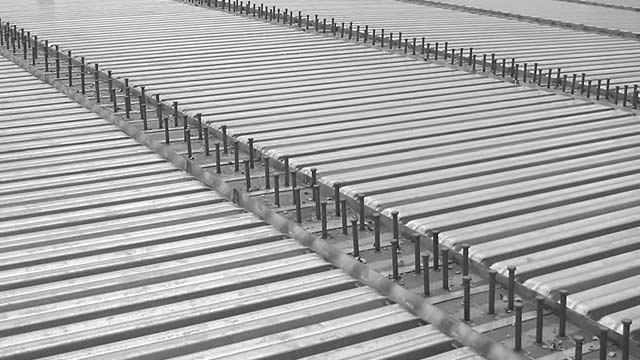
Bridge-Dek®

Rhino-Dek®
The ASCE calls safety the “great challenge” moving forward in bridge rehabilitation. Stay-in-place bridge deck forming systems offer safety benefits—before and after installation.
As opposed to wood forms, steel bridge deck requires no assembly before being installed. That keeps workers out of dangerous situations.
“Metal decking is a safer and faster way to form the concrete slab on any bridge project,” Mullen says. “All of the installation can be performed from the top of the bridge, eliminating working under the bridge and over traffic or water. This not only is faster since the forms do not get removed but also safer.”
With the steel deck installed and other surface bridge work continuing, another stay-in-place form benefit is realized. The deck prevents tools, building materials and other debris from falling through to the streets or waterways below.
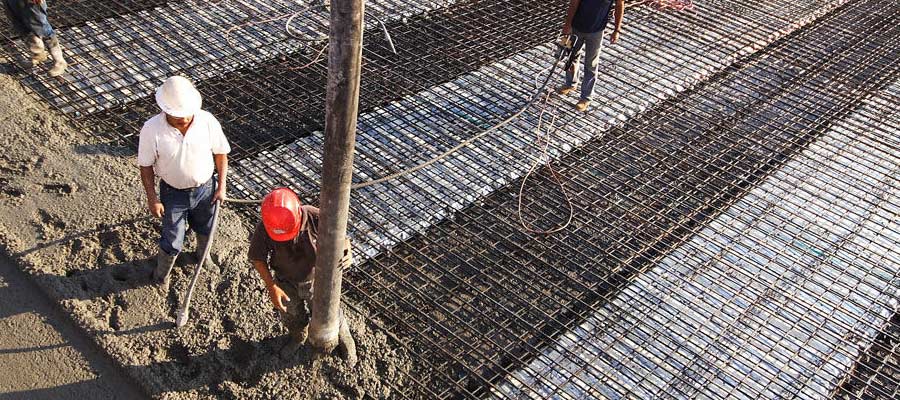
Workers pour the concrete over Rhino-Dek and rebar on the Trout River bridge project in Jacksonville, Florida.
After the concrete has been poured and cured, stay-in-place forms offer another layer of safety. Unlike wood forms that must be disassembled and taken off the structure, steel forms remain integral to the bridge.
“If you’re removing wood forms, particularly over traffic, it becomes a very dangerous operation,” Arvay says.
It’s not just project laborers that benefit from the superior safety of stay-in-place bridge deck forming systems. People, drivers, boaters and structures under and around bridges gain a level of protection from aging structures, Arvay says.
“As the bridge ages and the concrete deteriorates, metal stay-in-place deck forms prevent pieces of concrete from the deck slab’s underside from dropping onto whatever is below,” he explains. “If you do have the steel form, spalling deck concrete is contained so as not to fall and injure anyone.”
The country’s aging bridges have led to a change in infrastructure priorities. Repairing and maintaining existing bridges have taken on a greater importance. To meet this challenge, new technologies, materials, techniques and building methods have emerged, according to the ASCE. In addition, the American Association of State Highway and Transportation Officials requires new bridges to be designed with a 75-year service life, compared to the customary 50 years, meaning bridges are now built to last longer.
Steel stay-in-place forms can help meet these new standards, at the federal and local level, Arvay says.
“We design every Bridge-Dek system in accordance with each state Department of Transportation’s bridge specifications and project specific requirements,” he says. “If a design environment requires a heavier steel, heavier galvanizing or even a polymer coating to extend the product’s service life, we can provide that.”
Bridge-Dek is available in various galvanized coatings to extend service life. The highest level of galvanization is G235, which could be used to protect the bridge deck from road salt used in northern states during the winter. Bridge-Dek with G165 and G210 coating also is available. The higher the galvanization, the longer the deck will last, Mullen says.
Rhino-Dek, meanwhile, features polymer laminate—available on one or both sides of the deck pan—over galvanized steel. The combination makes Rhino-Dek resistant to salt, whether it’s direct splash, fog or road salt in the winter.
“Even heavily galvanized steel can eventually rust, and salt will accelerate it,” Arvay says. “The Rhino-Dek polymer comes between the salt and the steel on every exposed portion of the bridge deck system to extend the product life dramatically.”
The Florida Department of Transportation Materials Office estimates Rhino-Dek has a service life in excess of 124 years in an aggressive salt environment. Rhino-Dek also is abrasion- and ultraviolet-resistant.
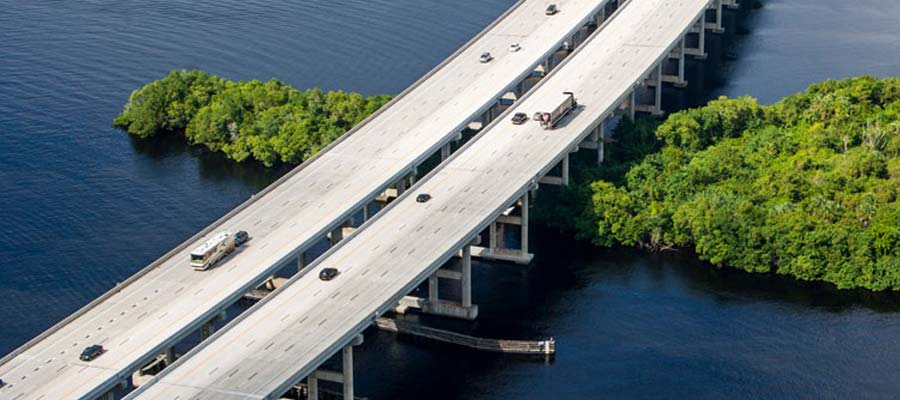
Photo courtesy of Florida Department of Transportation
The Florida Department of Transportation has tested and concluded Rhino-Dek has a service life of 124 years in aggressive salt environments.
Stay-in-place bridge deck forming systems from New Millennium can play a crucial role in upgrading America’s infrastructure. Our specialists are at the ready to assist bridge project teams whenever needed.
“Our project managers and engineering department are always available to help relay information if questions arise regarding the shop drawings or details to make sure the forming process is as smooth as possible and concrete pours go as scheduled,” Mullen says.
Manufactured in a controlled environment, Bridge-Dek and Rhino-Dek are fabricated from high-strength galvanized steel to meet design requirements. Both systems include four standard profiles and numerous matching rebar profiles that economically span distances up to 14 feet.
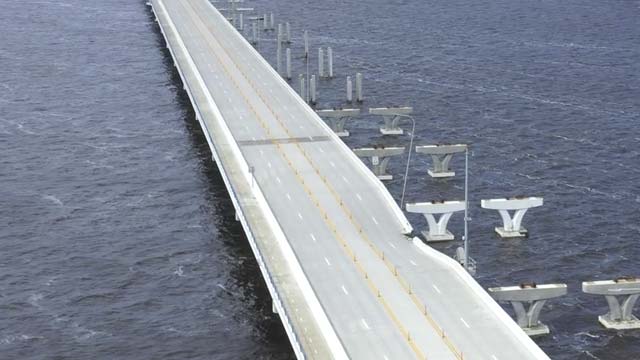
When Hurricane Sally hit Florida, it damaged the 1-year-old Pensacola Bay Bridge, forcing its shutdown. To quickly and safely repair the bridge, a Rhino-Dek® stay-in-place bridge deck forming system was used.
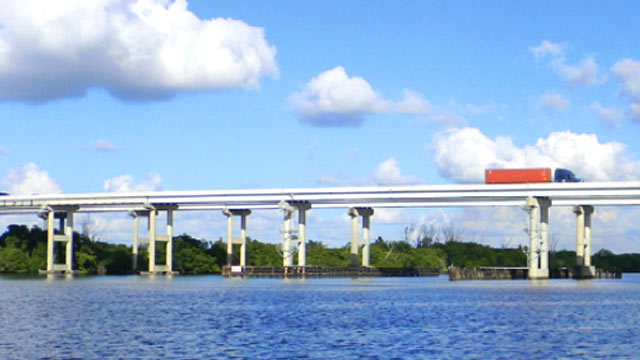
A polymer-coated stay-in-place deck forming system helped solve several construction complications of the I-75 Caloosahatchee River Bridge project in Fort Meyers, Florida, including protecting manatees’ habitat.
Building a better steel experience